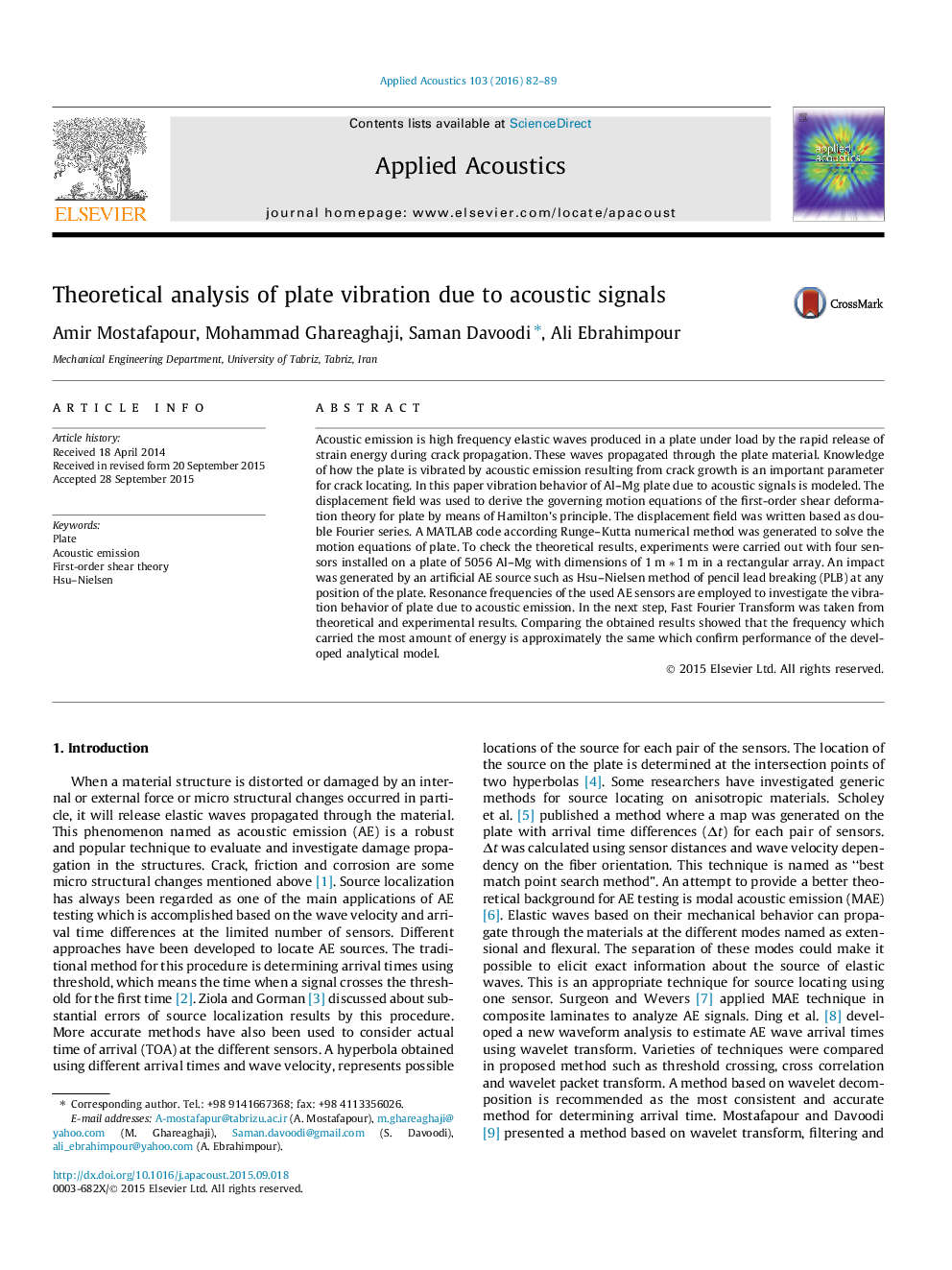| Article ID | Journal | Published Year | Pages | File Type |
|---|---|---|---|---|
| 760863 | Applied Acoustics | 2016 | 8 Pages |
Abstract
Acoustic emission is high frequency elastic waves produced in a plate under load by the rapid release of strain energy during crack propagation. These waves propagated through the plate material. Knowledge of how the plate is vibrated by acoustic emission resulting from crack growth is an important parameter for crack locating. In this paper vibration behavior of Al-Mg plate due to acoustic signals is modeled. The displacement field was used to derive the governing motion equations of the first-order shear deformation theory for plate by means of Hamilton's principle. The displacement field was written based as double Fourier series. A MATLAB code according Runge-Kutta numerical method was generated to solve the motion equations of plate. To check the theoretical results, experiments were carried out with four sensors installed on a plate of 5056 Al-Mg with dimensions of 1 m â 1 m in a rectangular array. An impact was generated by an artificial AE source such as Hsu-Nielsen method of pencil lead breaking (PLB) at any position of the plate. Resonance frequencies of the used AE sensors are employed to investigate the vibration behavior of plate due to acoustic emission. In the next step, Fast Fourier Transform was taken from theoretical and experimental results. Comparing the obtained results showed that the frequency which carried the most amount of energy is approximately the same which confirm performance of the developed analytical model.
Keywords
Related Topics
Physical Sciences and Engineering
Engineering
Mechanical Engineering
Authors
Amir Mostafapour, Mohammad Ghareaghaji, Saman Davoodi, Ali Ebrahimpour,
